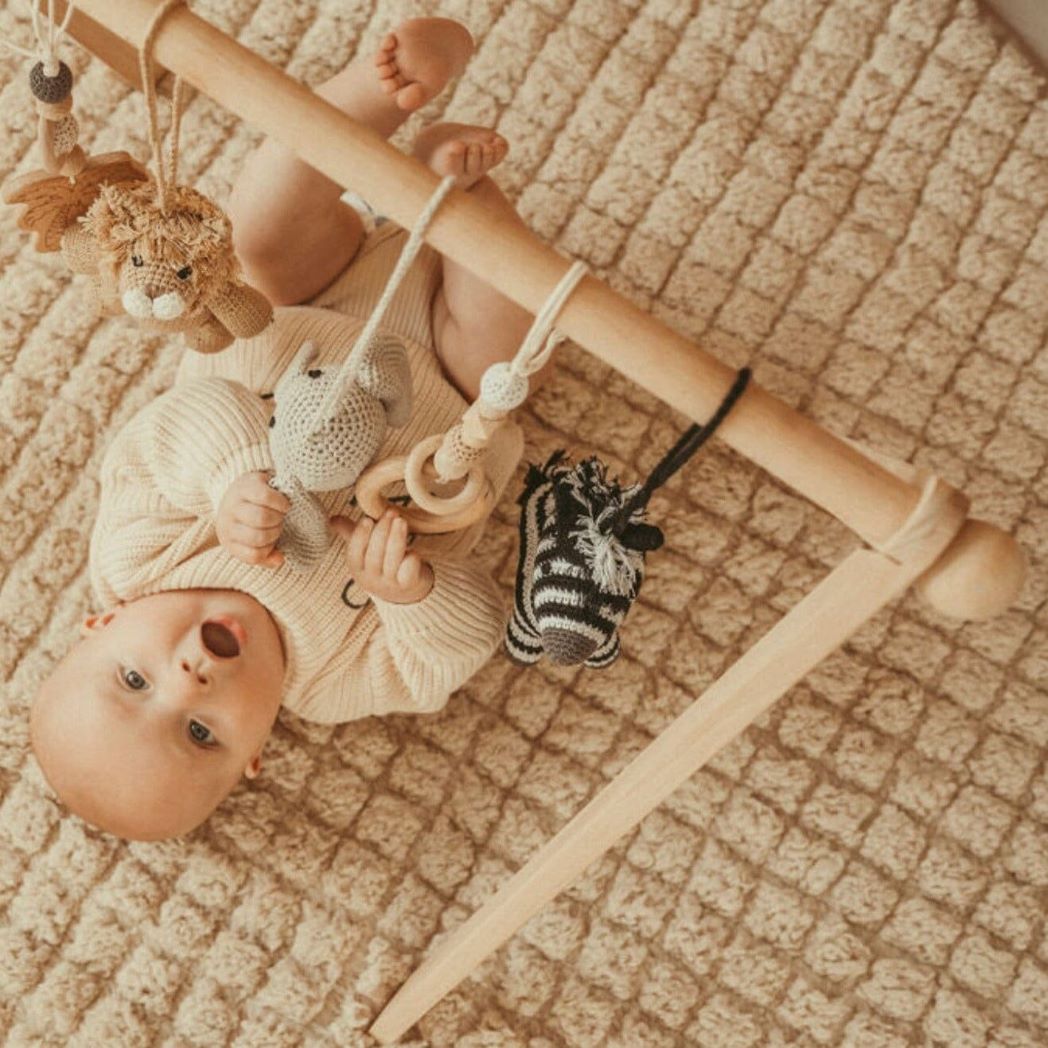No products found
Use fewer filters or remove all
Collection: Montessori Playgrounds
Incorporating the Montessori philosophy, the environment plays a crucial role in nurturing a child's independence, curiosity, and developmental growth. Including wooden indoor playgrounds and swings in your home or classroom can effectively support these values. This discussion explores the advantages of these play structures, their alignment with Montessori principles, key safety considerations, and some top recommendations for your indoor play area.
Understanding Wooden Montessori Indoor Playgrounds and Swings
These specially designed indoor structures made of wood encourage children to engage in active play, promote physical development, and allow them to explore their capabilities in a natural and secure setting. Typically, these playgrounds feature elements like climbing walls, slides, and bridges, while swings provide essential movement and sensory stimulation opportunities.
Advantages of Wooden Montessori Indoor Playgrounds and Swings
- Gross Motor Skills:Activities like climbing and swinging help children build muscle strength, balance, and coordination.
- Fine Motor Skills:Using ropes or handles can improve fine motor skills by enhancing grip and hand coordination.
- Problem-Solving:Navigating playground features encourages strategic thinking and problem-solving abilities.
- Spatial Awareness:Moving around the playground helps children understand space and body movement.
- Swinging offers vestibular stimulation, crucial for sensory development related to balance and coordination.
- Successfully using playground equipment boosts self-confidence and a sense of autonomy.
- In group settings, these playgrounds facilitate cooperative play, communication, and sharing.
Physical Development:
Cognitive Growth:
Sensory Stimulation:
Confidence and Independence:
Social Interaction:
How Wooden Montessori Indoor Playgrounds and Swings Align with Montessori Education
Montessori education values prepared environments that support independent, child-directed learning. These playgrounds and swings create a physical space where children can explore, make independent choices, and develop their skills in a secure and nurturing setting, perfectly complementing the Montessori philosophy through both unstructured play and guided skill development.
Safety Considerations for Wooden Montessori Indoor Playgrounds and Swings
- Material Quality:Ensure the structures are made of durable, non-toxic, child-safe wood.
- Sturdy Construction:Look for well-constructed, stable equipment to ensure safe use.
- Age Appropriateness:Select gear suitable for your child's age and developmental stage.
- Supervision:Always supervise children to prevent accidents.
- Proper Installation:Ensure swings are securely anchored and playgrounds are correctly assembled as per the manufacturer's guidelines.
- Safety Mats:Place soft mats or padding around the play area to cushion any falls.
Creating a Montessori Play Space at Home
- Select the Right Location:Choose a roomy area with enough space for movement.
- Design a Balanced Environment:Combine other Montessori items such as activity tables, reading corners, and sensory bins to create a holistic play space.
- Keep it Organized and Accessible:Make all playthings reachable and organized to foster independence and tidiness.
- Adopt a Minimalist Approach:Avoid overcrowding the space to maintain a simple and inviting atmosphere.
Maximizing the Use of Wooden Montessori Indoor Playgrounds and Swings
- Rotate Play Elements:Keep play engaging by rotating different playground features or swings.
- Integrate Learning Activities:Use the equipment for imaginative play, storytelling, or educational activities like counting or shape recognition.
- Encourage Free Play:Let children freely explore the playground and swings to boost creativity and autonomy.
- Model Safe Use:Show how to use the equipment safely and provide gentle reminders as necessary.
Conclusion
Wooden Montessori indoor playgrounds and swings are valuable additions to any child's learning environment. They offer endless opportunities for physical and cognitive development, align seamlessly with Montessori principles, and create a nurturing space for growth and exploration.
-
The Montessori Method: A Complete Guide for Par...
A practical guide to understanding and implementing Montessori principles, helping parents nurture their child's natural development and independence.
The Montessori Method: A Complete Guide for Par...
A practical guide to understanding and implementing Montessori principles, helping parents nurture their child's natural development and independence.
-
The Benefits of Natural Materials in Baby Toys
Explore how Jabaloo's natural baby toys enhance development and promote safe, engaging play for your little one.
The Benefits of Natural Materials in Baby Toys
Explore how Jabaloo's natural baby toys enhance development and promote safe, engaging play for your little one.
-
Tips for Encouraging Independent Play in Toddlers
Looking for tips on how to encourage independent play in toddlers? Check out this blog post for some great ideas!
Tips for Encouraging Independent Play in Toddlers
Looking for tips on how to encourage independent play in toddlers? Check out this blog post for some great ideas!
-
Five Simple Play Tunnel Games for Toddlers
These are five fun and simple games that can be played with a ball in a play tunnel with a toddler. They will help develop their motor skills and hand-eye...
Five Simple Play Tunnel Games for Toddlers
These are five fun and simple games that can be played with a ball in a play tunnel with a toddler. They will help develop their motor skills and hand-eye...
